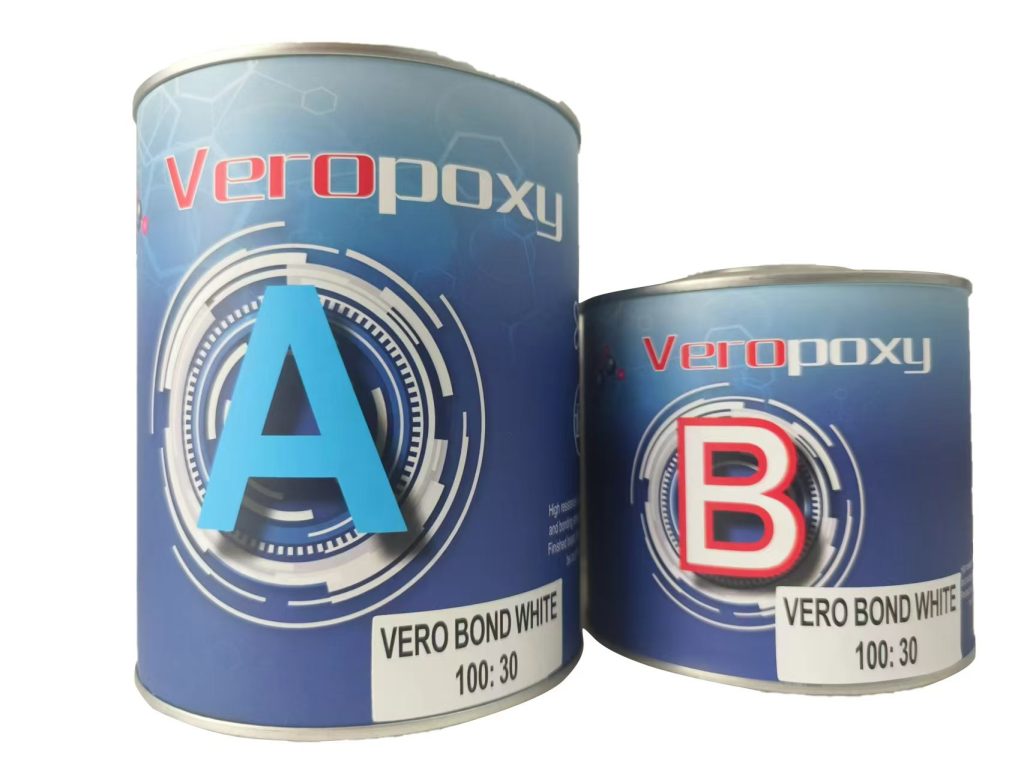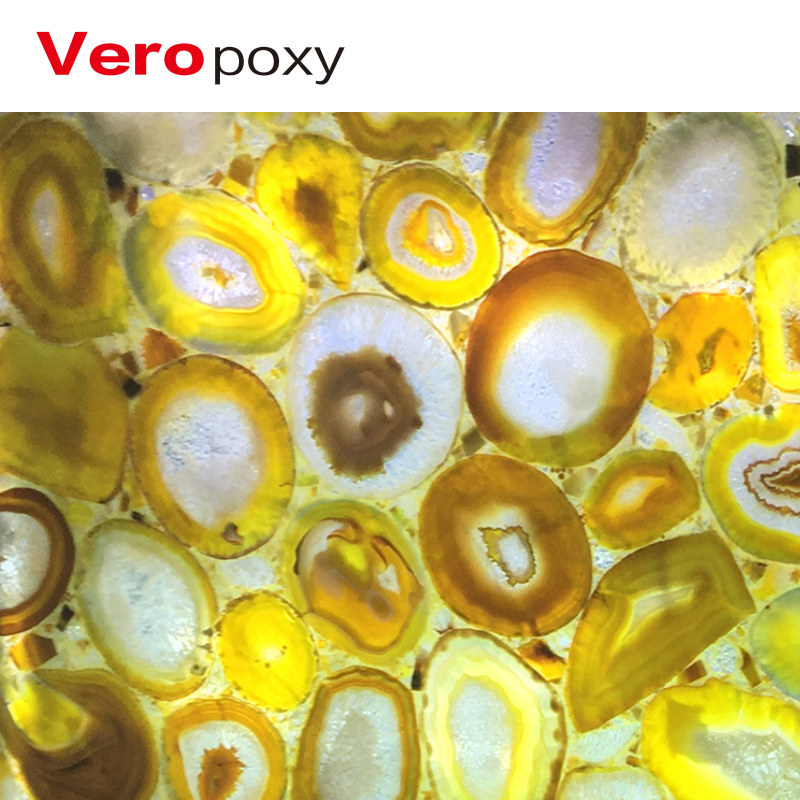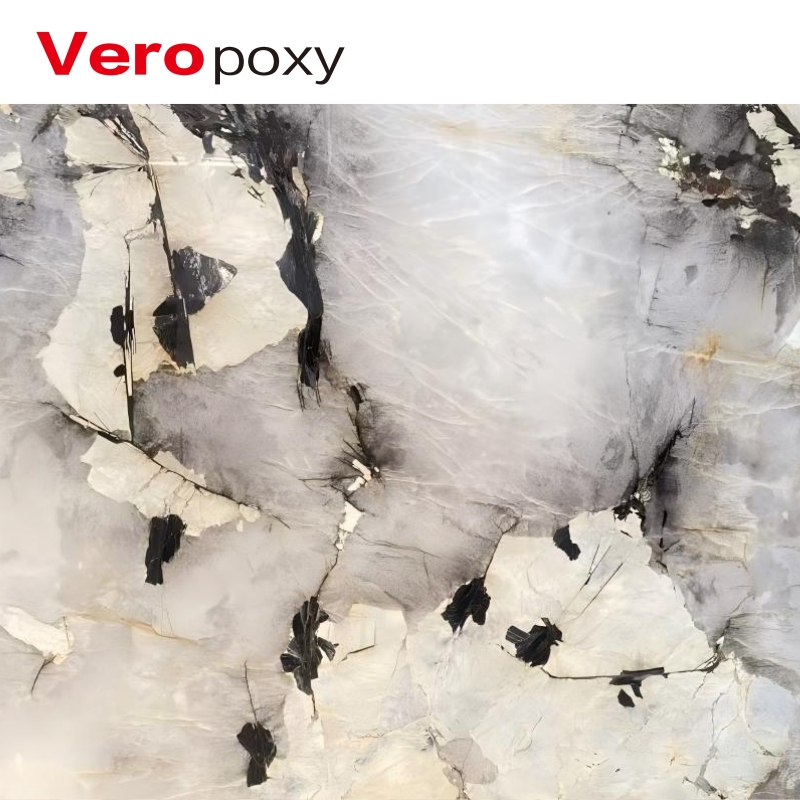In the field of stone processing and repair, epoxy resin is increasingly used. With its excellent bonding strength, low curing shrinkage, and good wettability and permeability, it has become an ideal material for repairing stone surface defects and strengthening stone structure. However, the curing process of epoxy resin is complex and involves multiple key factors. The control of these factors is crucial to ensure the curing effect and the final performance of the stone. This article will explore the key factors in the curing process of epoxy resin and provide corresponding control strategies.

Epoxy resin
Selection of epoxy resin and curing agent
Epoxy resin is an organic polymer compound containing two or more epoxy groups. The epoxy groups in its molecular structure are highly reactive and can undergo cross-linking reactions with a variety of curing agents to form a three-dimensional network structure polymer. The curing agent is the key substance that causes the epoxy resin to transform from liquid to solid. It undergoes a ring-opening addition reaction with the epoxy groups in the epoxy resin, triggering a series of cross-linking reactions to form a dense and stable polymer network.
When selecting epoxy resin and curing agent, the characteristics of the stone and the application environment need to be considered. For example, for application scenarios that require rapid curing, curing agents with faster reaction rates, such as aliphatic polyamines, can be selected; for stone materials that require high heat resistance, aromatic polyamines or anhydride curing agents can be selected. In addition, the amount of curing agent must also be precisely controlled. Too much or too little will affect the curing effect and final performance. Generally speaking, the amount of curing agent should be determined based on the epoxy equivalent of the epoxy resin and the active hydrogen equivalent of the curing agent to ensure that the two can fully react.
Control of curing temperature
Curing temperature is one of the important factors affecting the curing process of epoxy resin. Different curing agents are suitable for different temperature ranges, such as low-temperature curing agents with a curing temperature below room temperature, room-temperature curing agents with a curing temperature of room temperature to 50°C, medium-temperature curing agents with a curing temperature of 50°C to 100°C, and high-temperature curing agents with a curing temperature above 100°C.
Too high or too low a temperature will have an adverse effect on the curing effect. Too high a temperature may cause premature reaction of epoxy resin and curing agent, shorten the pot life of the mixture, and increase energy consumption; while too low a temperature will slow down the curing reaction rate, prolong the curing time, and may even lead to incomplete curing.
In practical applications, the appropriate curing temperature should be determined according to the type of curing agent selected and the construction environment of the stone. For example, when constructing in a low temperature environment in winter, heating equipment can be used to preheat the stone and epoxy resin mixture to increase the curing reaction rate; while in a high temperature environment in summer, care should be taken to avoid direct sunlight and high temperature heat sources to prevent premature curing of the epoxy resin.
Mixing ratio and mixing uniformity
The mixing ratio of epoxy resin and curing agent must be strictly proportioned in accordance with the requirements of the product manual. Improper mixing ratio will lead to incomplete curing or decreased performance after curing. For example, excessive curing agent will make the cured epoxy resin brittle and hard, while insufficient curing agent will lead to incomplete curing and affect the bonding strength. In actual operation, precise measuring tools, such as electronic scales, can be used to ensure the accuracy of the mixing ratio.
Mixing uniformity is also a key factor affecting the curing effect. Uneven mixing will lead to insufficient reaction between epoxy resin and curing agent, forming areas of incomplete local curing, thus affecting the bonding effect and overall performance of the stone. During the mixing process, appropriate mixing equipment, such as a high-speed mixer, should be used to ensure that the epoxy resin and curing agent can be fully mixed. At the same time, the mixing time should also be controlled within an appropriate range. Too short a mixing time cannot make the mixture uniform, while too long a mixing time may cause the mixture to cure prematurely.

Epoxy Resin for Semi-Precious Stones
Control of environmental humidity
Environmental humidity also has a certain effect on the curing process of epoxy resin. Excessive humidity will cause epoxy resin to absorb moisture in the air, affecting the curing reaction, and may even cause bubbles or cracks on the surface of the cured epoxy resin. Therefore, when constructing in a high humidity environment, appropriate measures should be taken to reduce the environmental humidity, such as using dehumidification equipment or setting vents in the construction area to ensure that the epoxy resin can cure normally.
Pretreatment of stone surface
The cleanliness and roughness of the stone surface have an important influence on the bonding effect of epoxy resin. Before applying glue, the stone surface should be thoroughly cleaned to remove dust, oil, wax and other impurities on the surface to ensure that the epoxy resin can fully contact and bond with the stone surface. At the same time, appropriate surface roughness can increase the contact area between the epoxy resin and the stone and improve the bonding strength. The stone surface can be pre-treated by grinding, sandblasting and other methods to increase its roughness.
Control of curing time
Curing time refers to the time required for epoxy resin to be fully cured from the beginning of mixing. The length of curing time depends on factors such as the type of epoxy resin, the type of curing agent and the curing conditions. In practical applications, the appropriate curing time should be determined according to the construction requirements and use environment of the stone. For example, for stones that need to be put into use quickly, an epoxy resin system with a shorter curing time can be selected; and for some stones with higher bonding strength requirements, the curing time can be appropriately extended to ensure that the epoxy resin can be fully cured.
During the curing process, the curing degree of the epoxy resin should be checked regularly, which can be judged by observing its color changes, hardness changes and whether it can withstand a certain external force. When the epoxy resin is completely cured, subsequent grinding, polishing and other processes can be carried out.
Reasonable use of additives
In order to improve the performance of epoxy resin, some additives such as plasticizers, diluents, fillers, etc. are sometimes added to epoxy resin. Plasticizers can improve the flexibility of epoxy resin and reduce its brittleness after curing, but excessive plasticizers will affect the bonding strength of epoxy resin. Diluents can reduce the viscosity of epoxy resin and improve its wettability and permeability, but the amount should also be controlled to avoid affecting the curing effect. Fillers can improve the filling property of epoxy resin and reduce costs, but too much filler will reduce the bonding strength and toughness of epoxy resin.
When using additives, the type and amount of additives should be reasonably selected according to the type of epoxy resin and the application requirements of the stone. At the same time, the order of adding additives and the mixing method should also be noted to ensure that the additives can be evenly dispersed in the epoxy resin.
Quality inspection and monitoring
During the curing process of epoxy resin, a strict quality inspection and monitoring system should be established to ensure the curing effect and the final performance of the stone. Some professional testing equipment and methods, such as tensile strength test, shear strength test, hardness test, etc., can be used to test the performance of cured epoxy resin. At the same time, each link in the construction process should be monitored, such as mixing ratio, curing temperature, curing time, etc., to promptly discover and correct possible problems.

best epoxy resin for granite
Conclusion
The application of epoxy resin in stone processing and repair has broad prospects, but its curing process is complex and involves multiple key factors. Through the selection of epoxy resin and curing agent, the control of curing temperature, the control of mixing ratio and mixing uniformity, the adjustment of environmental humidity, the pretreatment of stone surface, the determination of curing time, the reasonable use of additives, and the strict control of quality inspection and monitoring, the curing effect of epoxy resin and the final performance of stone can be effectively improved, ensuring the quality and durability of stone engineering.
In practical applications, the control strategies of the above key factors should be flexibly applied according to the specific stone type and construction environment to achieve the best construction effect.
Post time: 1 月-17-2025

